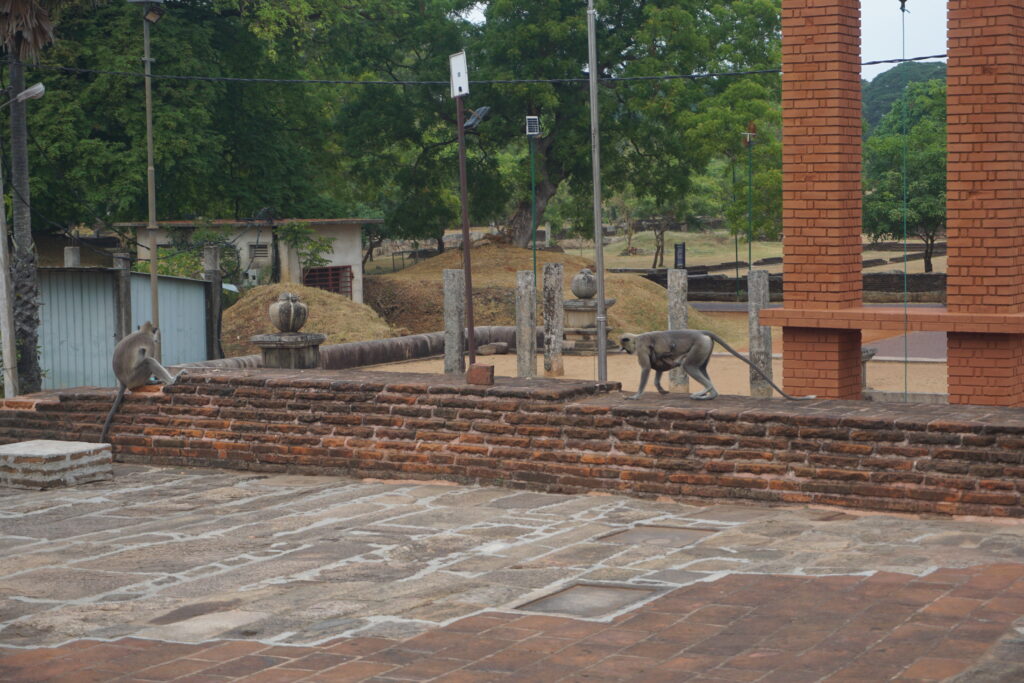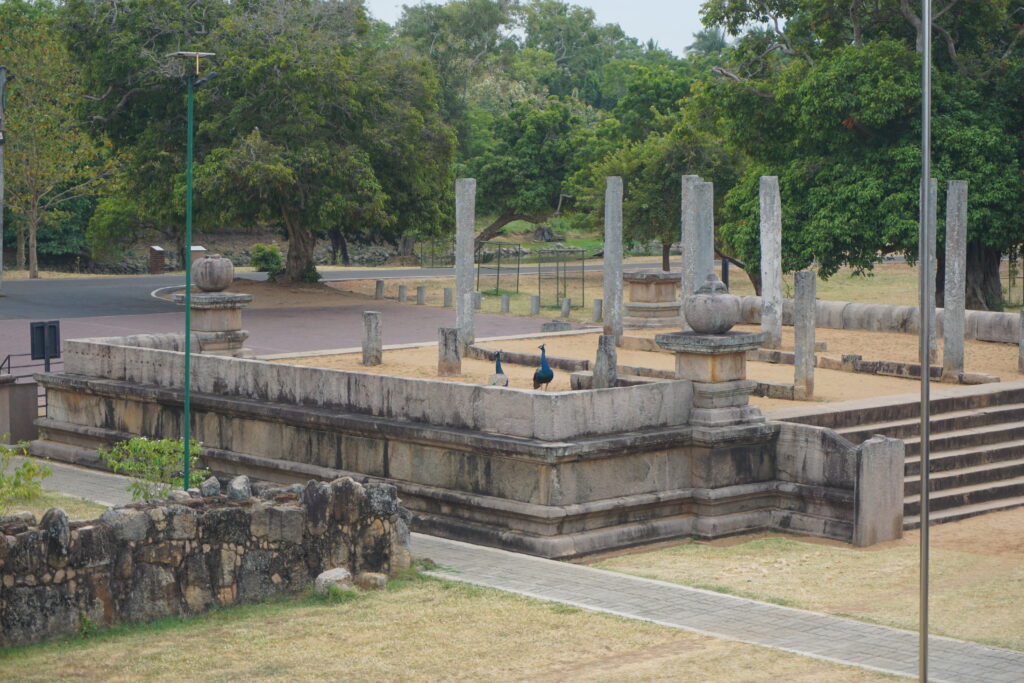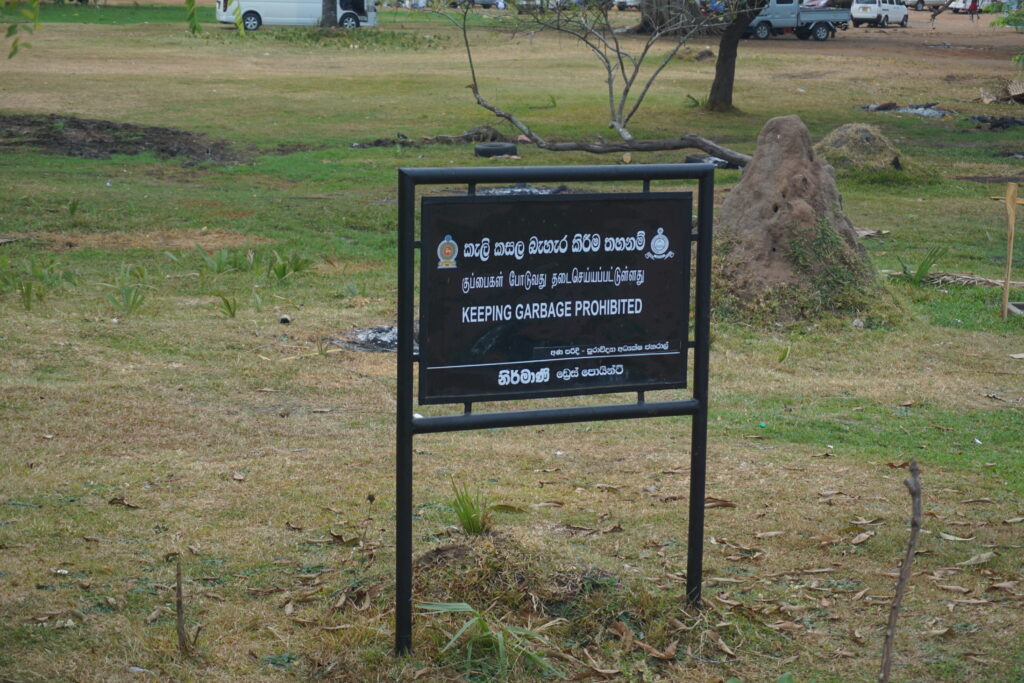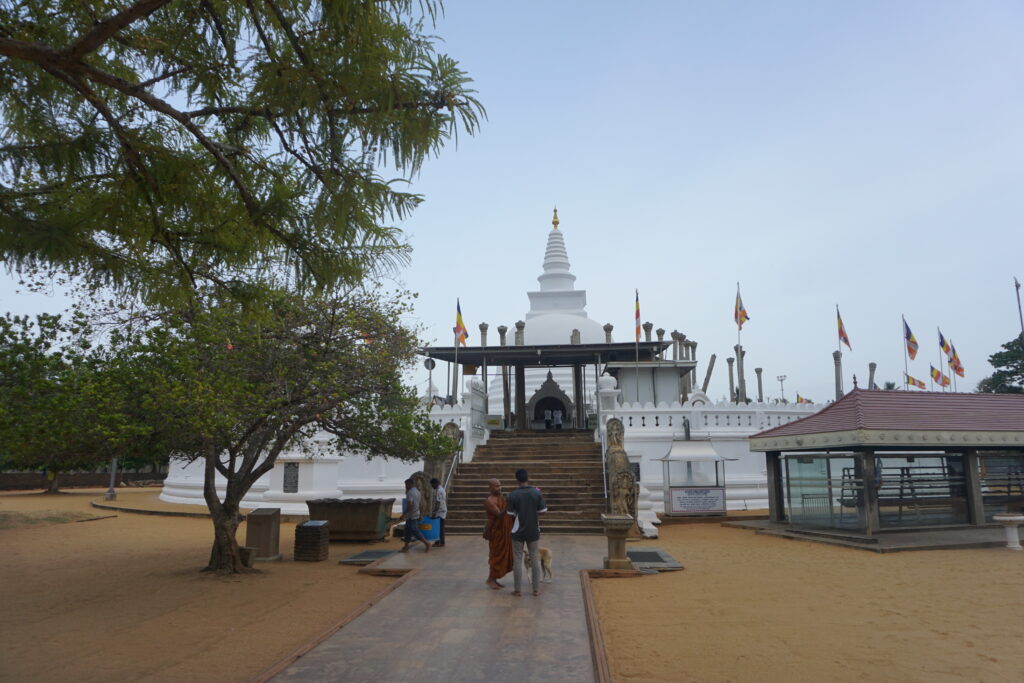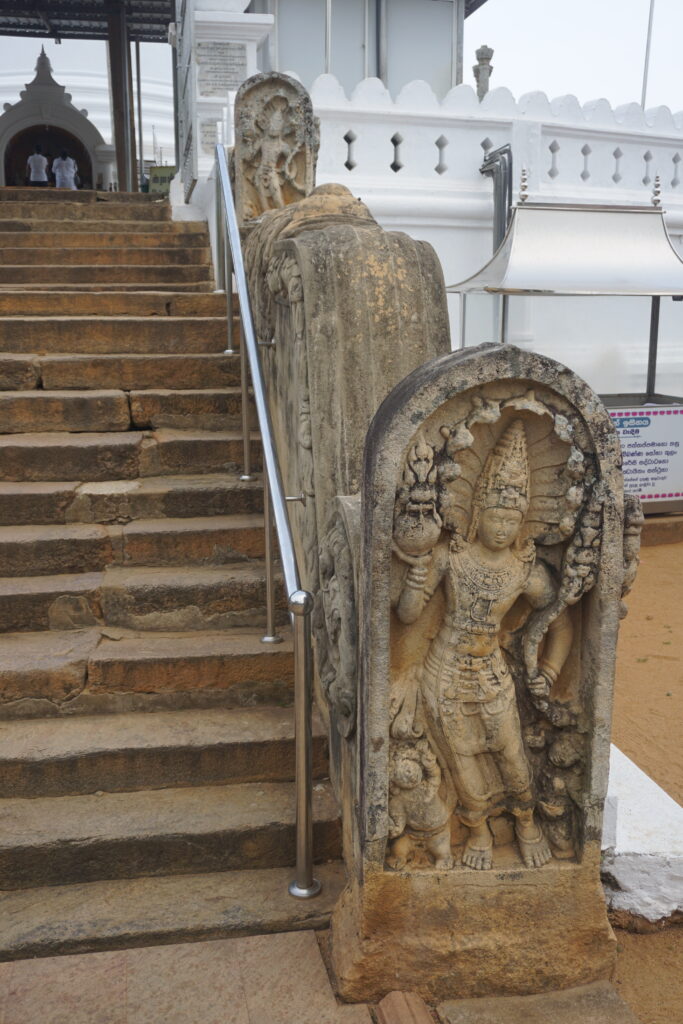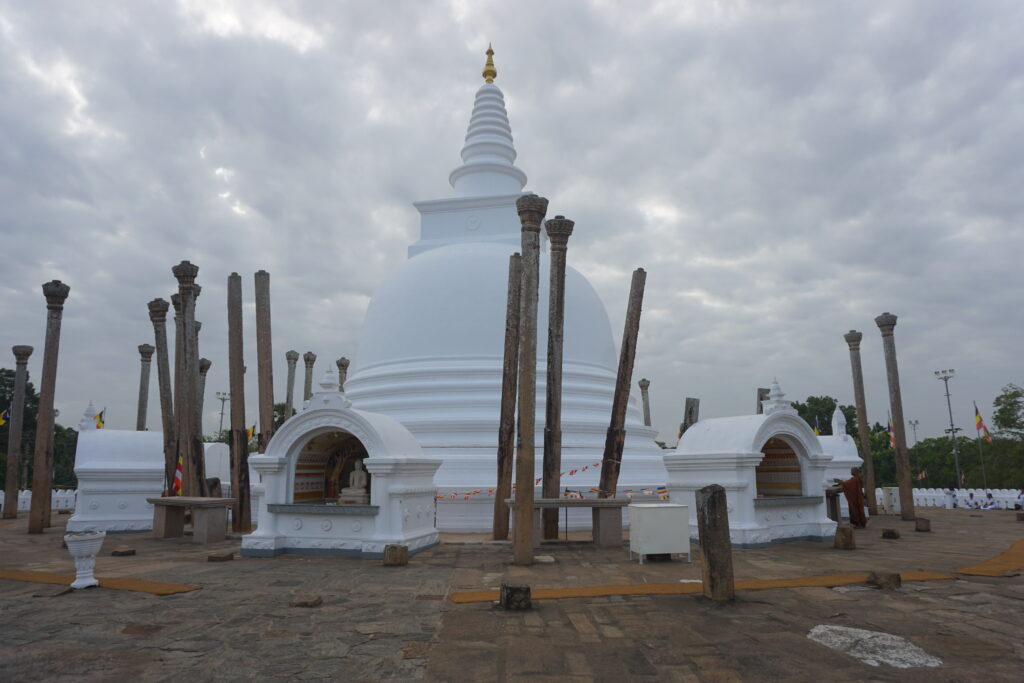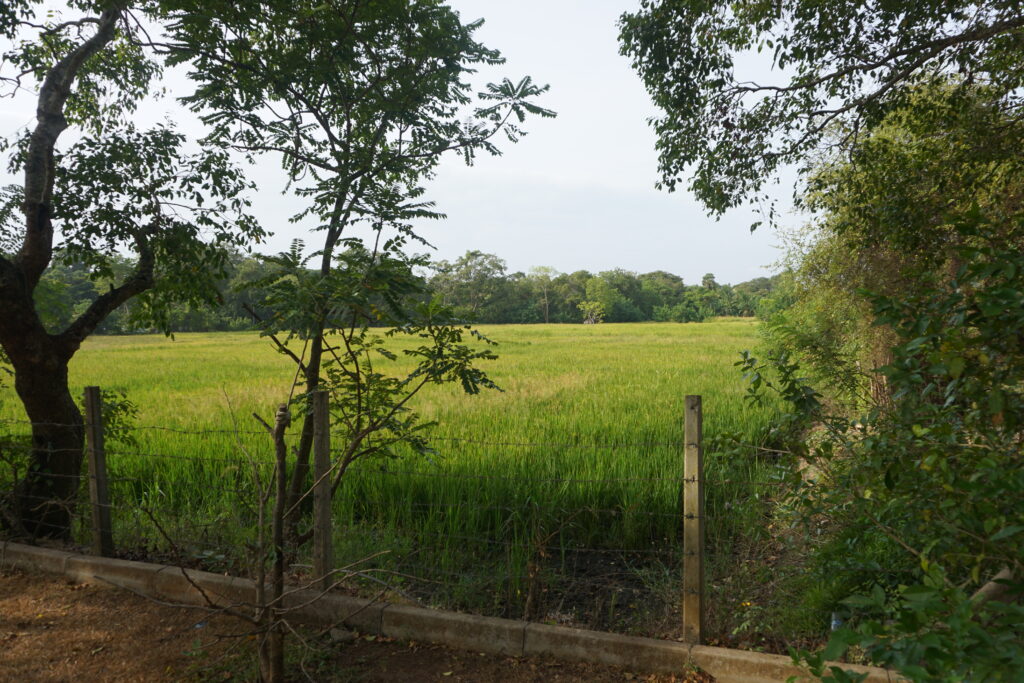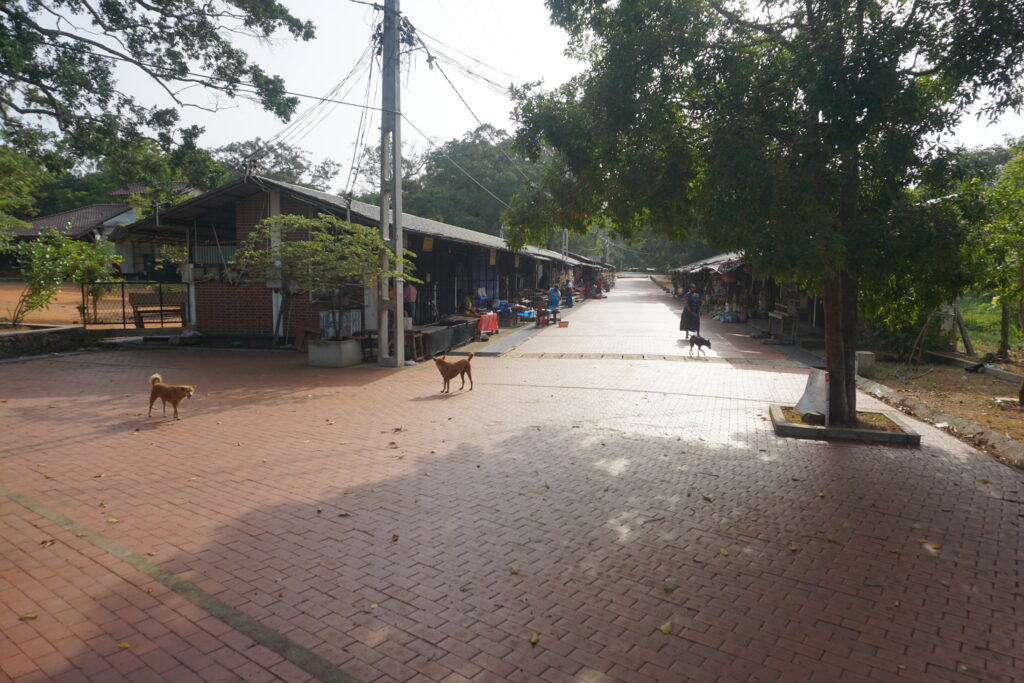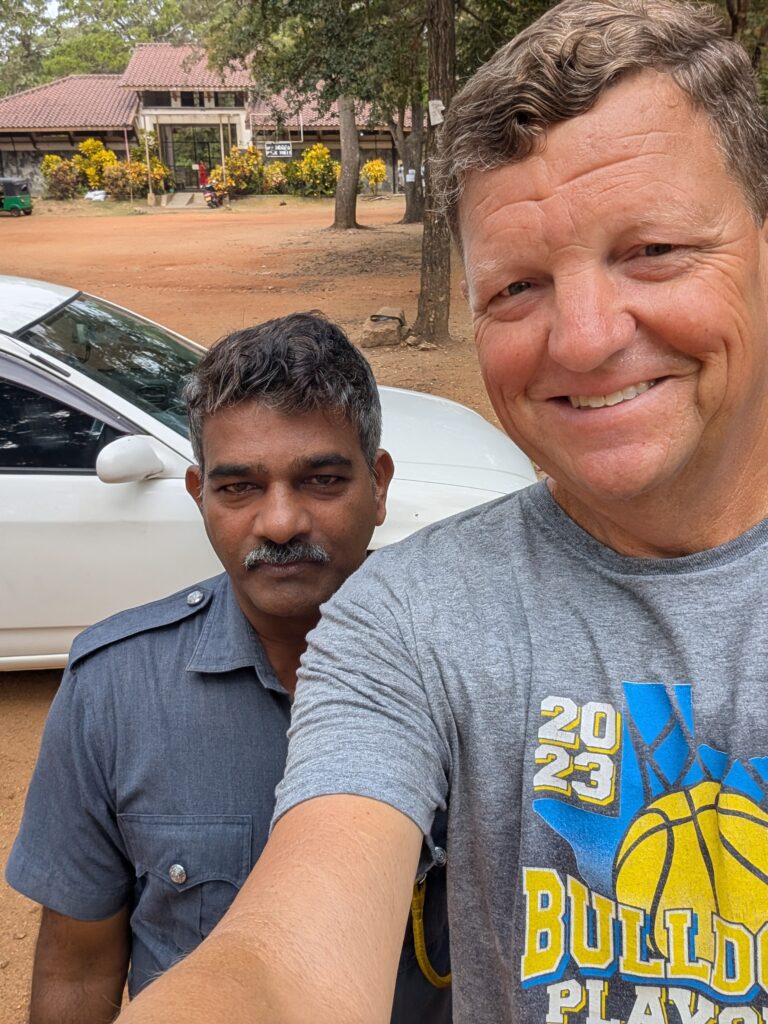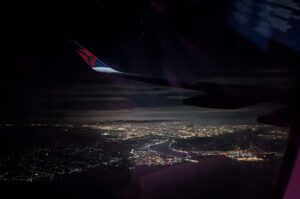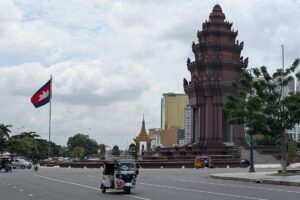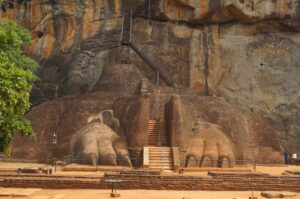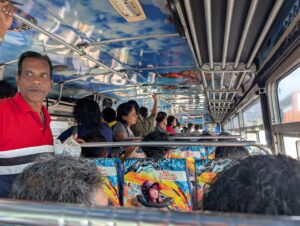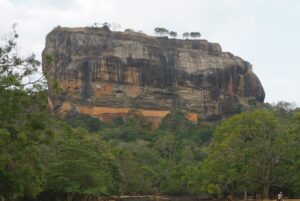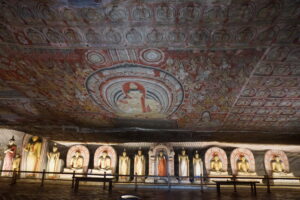Anuradhapura
Stupa (Fee) Overload
There are several regions to see in Sri Lanka, each offering different attractions. I was most interested in visiting the area known as the cultural triangle. It is home to the most ancient historic sites in the country. The cultural triangle contains the ancient capitals of Anuradhapura and Polonnaruwa, the hilltop fortress stronghold of Sigiriya, and the city of Kandy, which hosts the Temple of the Tooth, and the Festival of the Tooth. Some of the ancient strongholds are over a thousand years old. The oldest Buddhist temples date back as far as the third century before Christ. There are many things to see. After burning a day getting my driver’s license and rental car, I was ready to be a tourist again.
In addition to the problems outlined in the Colombo article, my schedule was further influenced by my church arrangements. The only congregation I was aware of was in Colombo. Ideally, my exploration of Sri Lanka would have formed a loop that started and ended in Colombo. Sunday fell in the middle of my time in Sri Lanka, so I would need to head out exploring for a few days, come back to Colombo for worship, then head back out into the hinterlands to see more sites. I decided I would head for the cultural triangle first, return for church, then go see some natural sites such as Yala National Park, Galle, and the beaches between Sunday and my outbound flight to Mumbai on Thursday.
My car was not ready early in the day on Thursday, and it was a four hour drive to Anuradhapura. I found my motel and set out to see what I could of the town and its ancient sites on Thursday afternoon and evening. Anuradhapura served as the capital of a Sinhalese kingdom from the 5th century BC until its destruction at the hands of a Chola army (Tamil people) from Southern India in the late 10th and again in the early 11th century AD. The area has been inhabited much longer. Some members of this Sinhalese ruling line were very strong supporters of Theravada Buddhism. As such, there are many very old Buddhist temples and works of art in Anuradhapura, some dating back over 2,300 years.
I first went to the temple nearest my room, Isurumuniya. There are a couple of old shrines near a pool with a co-located cave and rock outcropping. A small interior museum at this site houses several 6th-8th century rock carvings taken indoors for protection that were found on this site. There is a carving of the royal family, one of some horsemen, one of elephants bathing, and the most famous – an image of intertwined lovers. The names of the lovers are not recorded, a fact that has only fueled generations of speculation. After walking through the tiny museum, you have the option to walk up to one of the shrines, or to take a path leading up to the high points on the rock. I did both of these. It is not an extremely high rock cliff, and the cave is relatively small.
I met some younger solo travelers here who were hiring cabs to get from one peripheral destination to another. They were just beginning to explore the city as well. Since I hadn’t been to any other sites, I figured I could just go where they were going. I offered to drive them in my rented car, and they navigated me to a couple of other sites until it got close to supper time. We visited an ancient cave monastery. This site was not all that well preserved. It was also free, and not busy with tourists. We walked around at our leisure and read what few signs were there describing the site. There was a very small amount of remaining painted art. A few minutes were plenty to walk the site and see what we could.
(Continued)
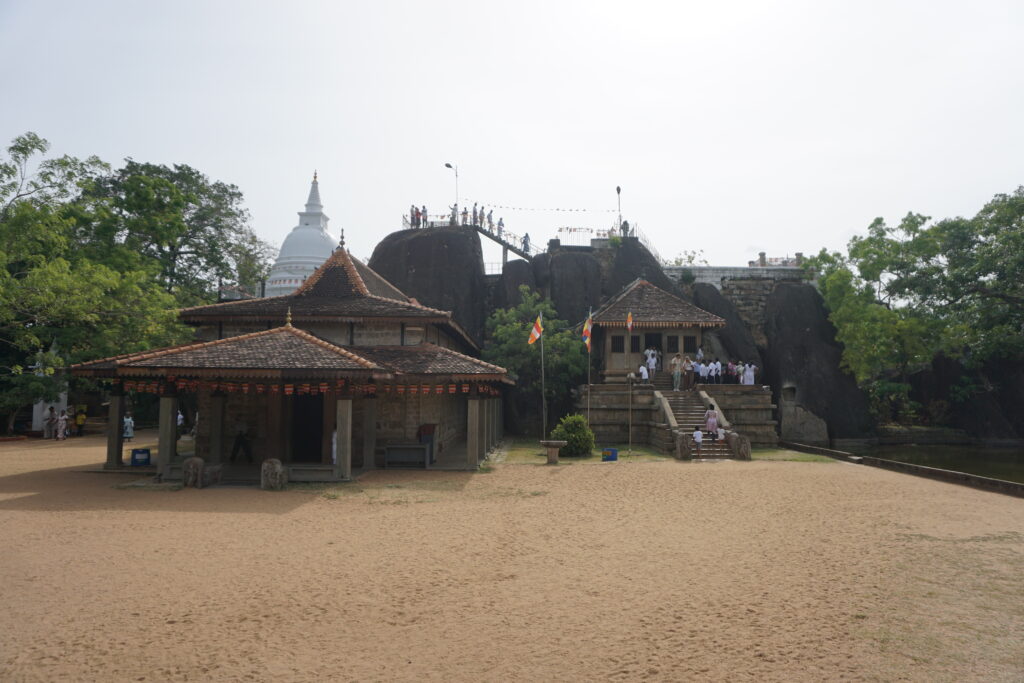
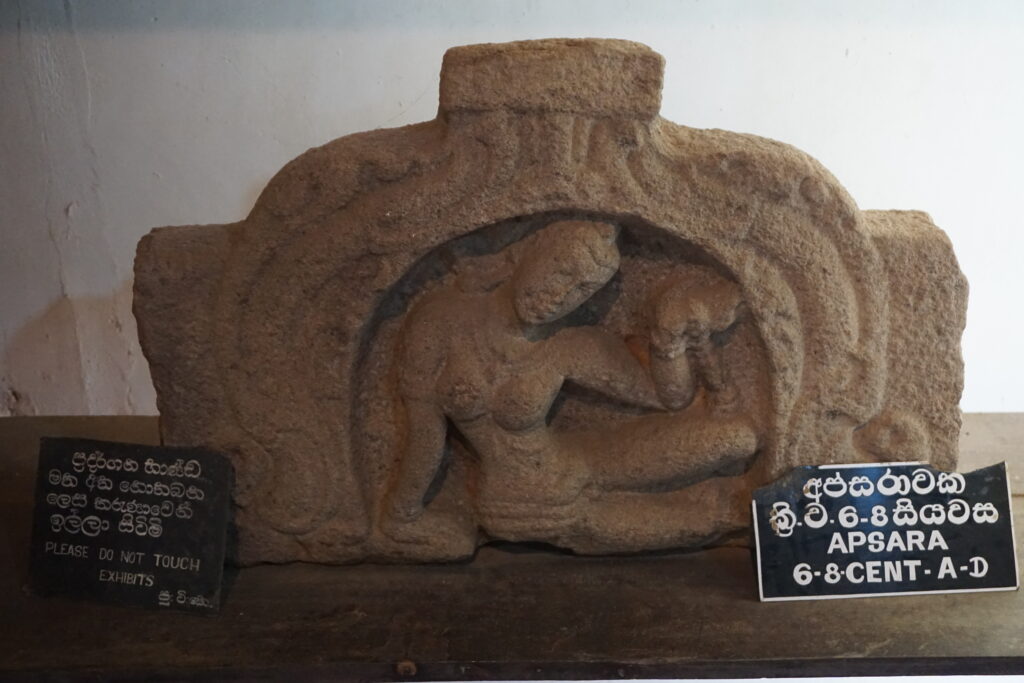
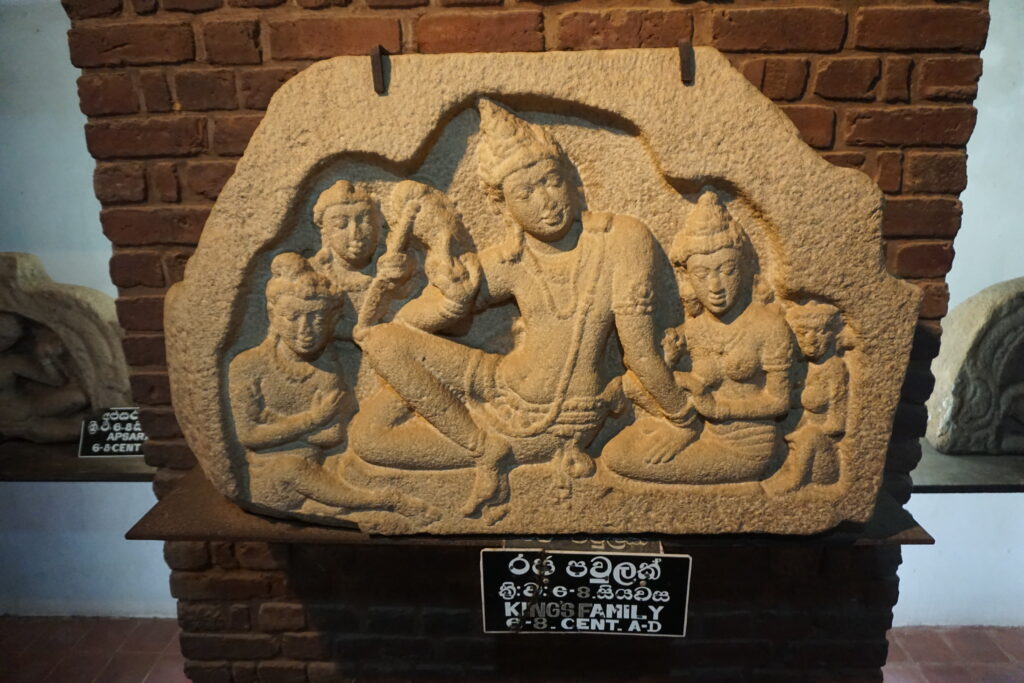
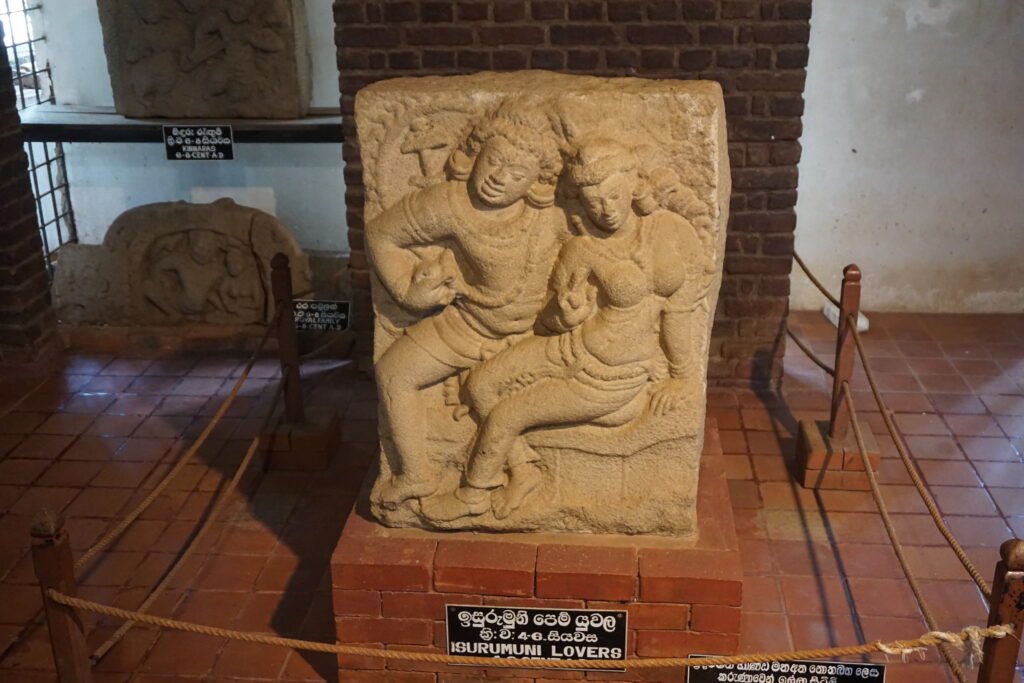
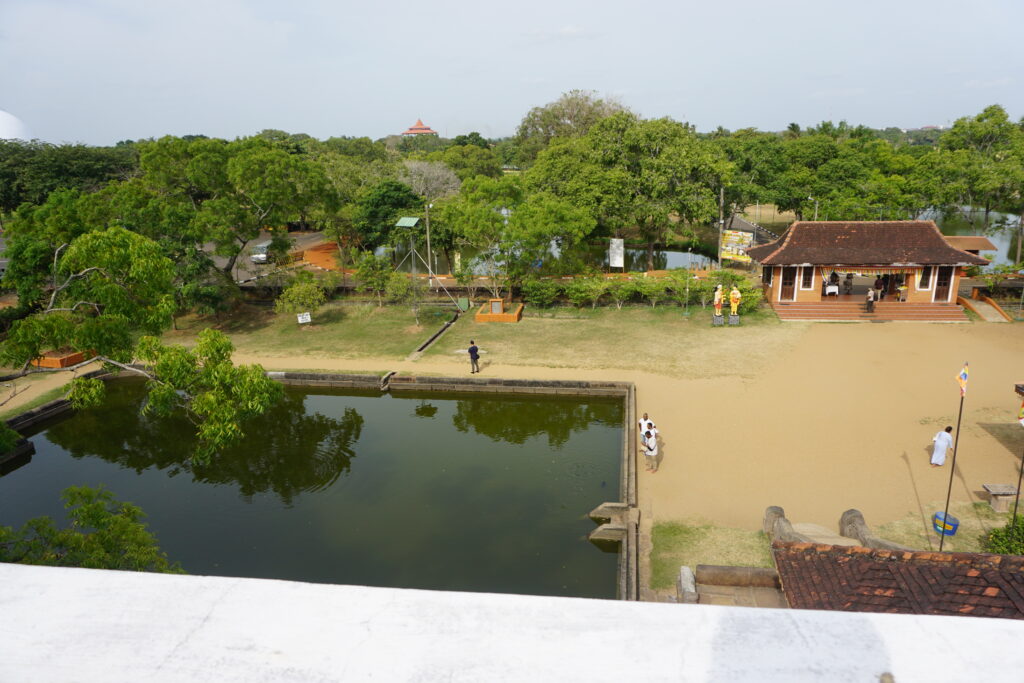
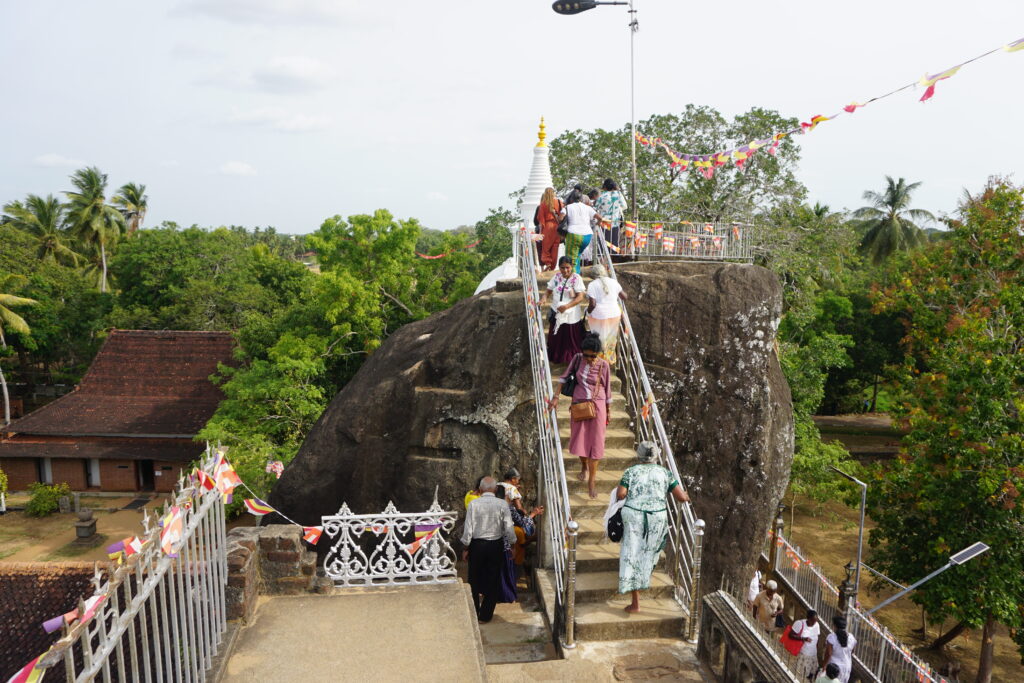
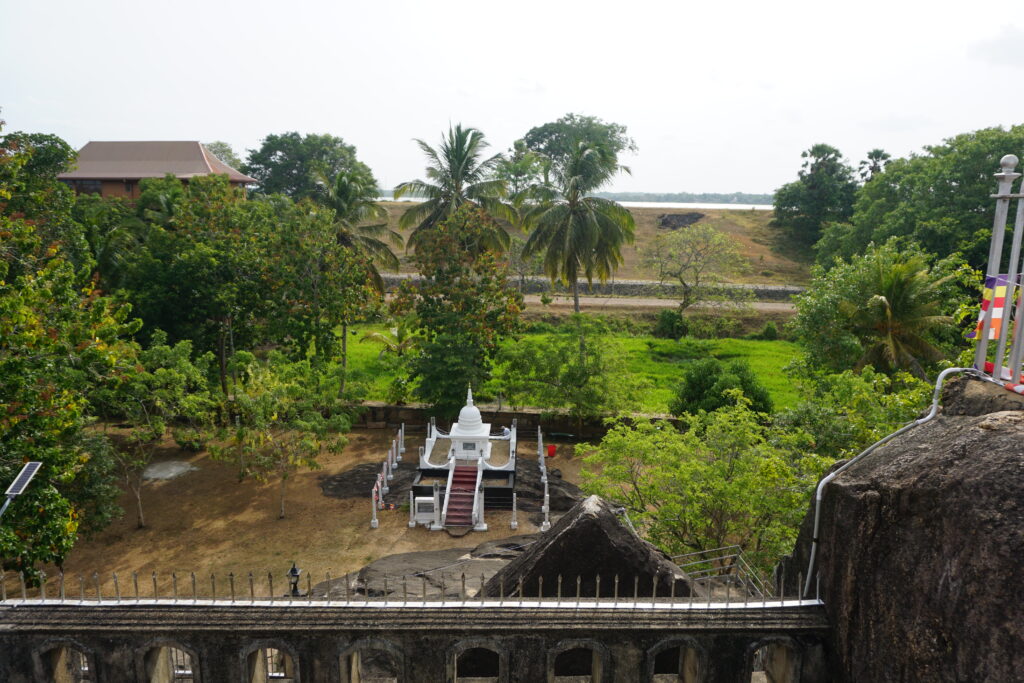
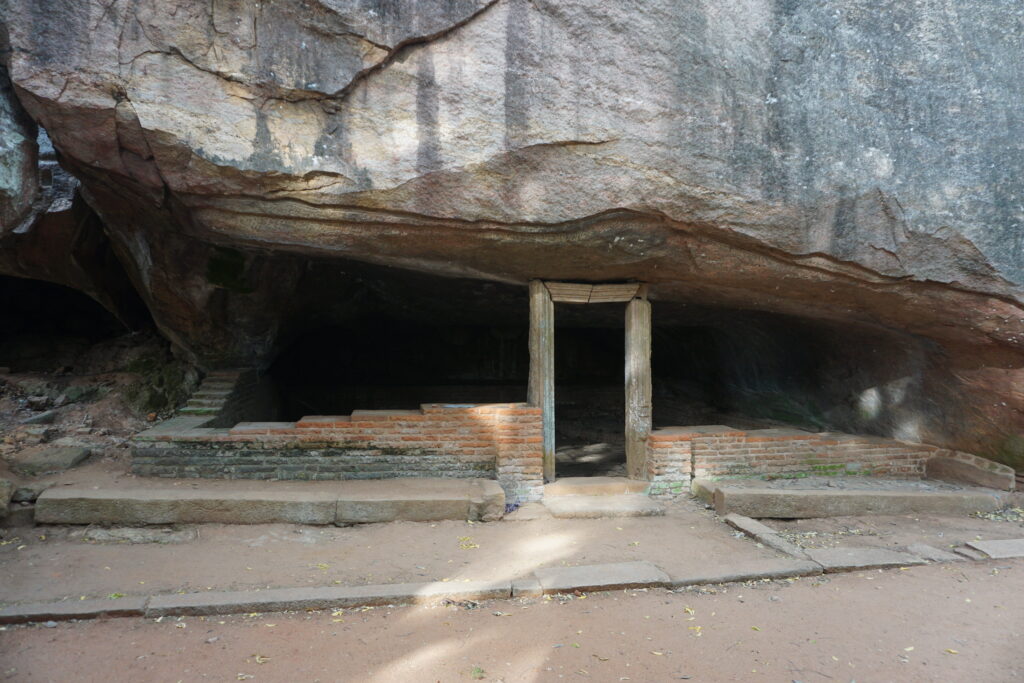
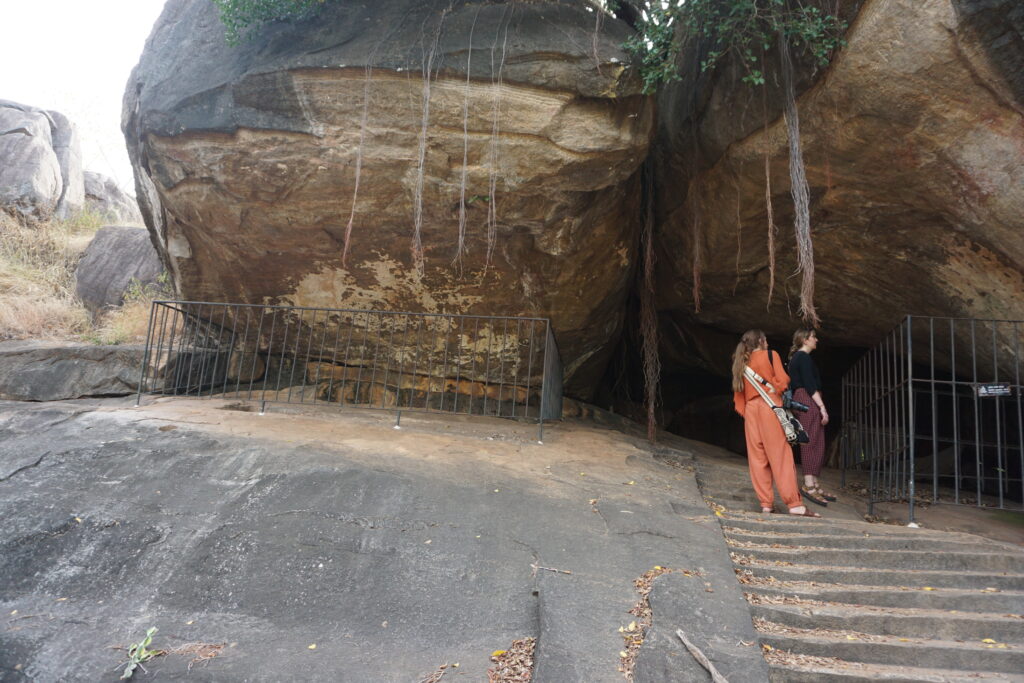
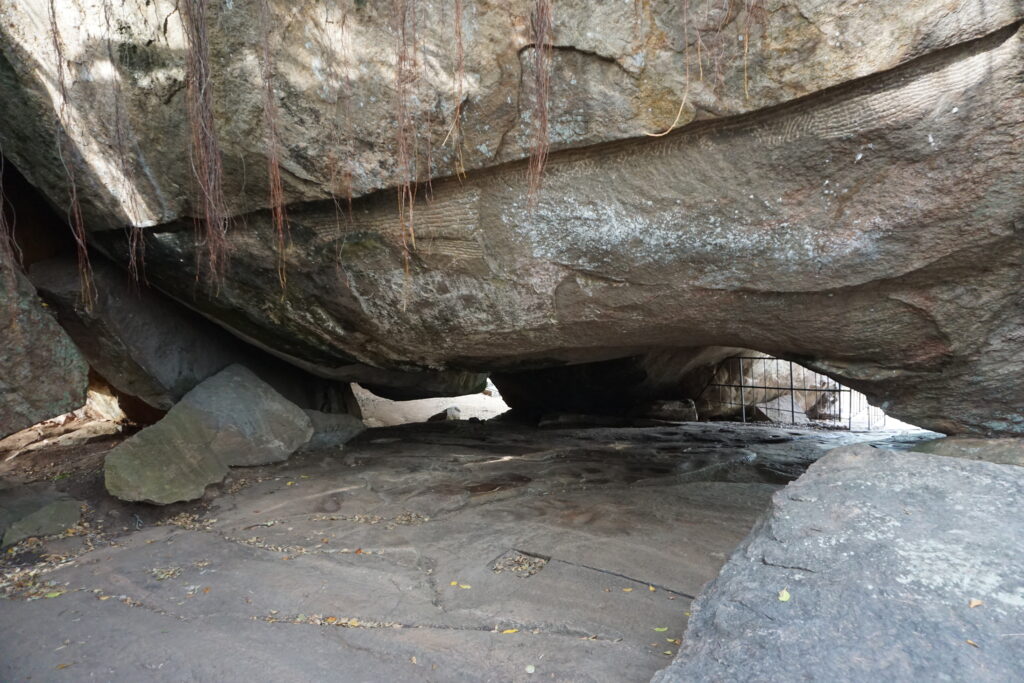
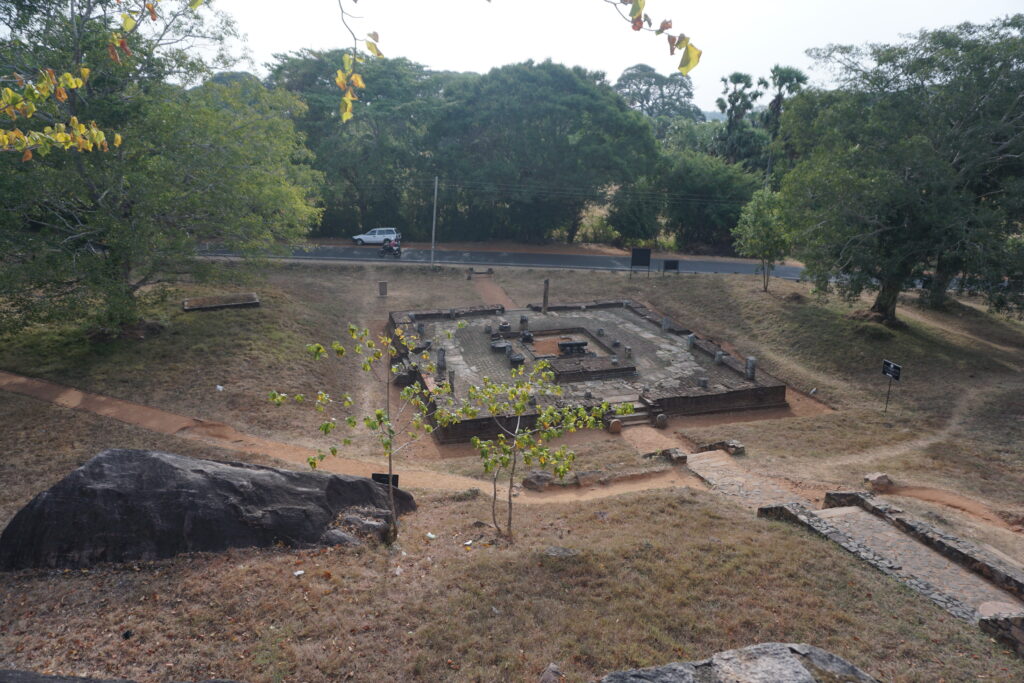
After a quick bite, I made my way to the Sandahiru Seya. This is a modern, dome shaped stupa, nearly 300 feet high, built to commemorate the sacrifices of members of the Sri Lankan armed forces in its recent civil war. This temple only opened in 2021. From this site, I went to the Jaya Sri Maha Bodhi. This is thought to be the world’s oldest human planted tree. It was planted as a sapling of the Bodhi Tree in 236 BC. The original Bodhi Tree in Bihar India is the place where the Buddha attained enlightenment 500 years before the birth of Christ. The sapling was brought here by the third daughter of an ancient emperor of Sri Lanka as a gift and guide. Over the years, Sri Lankan royals have appointed families with the special task of protecting this sacred fig tree. To this day, the tree is protected and surrounded by venerators and worshippers, as well as lines of tourists and people trying to capitalize on the tree’s tourist draw. As I was about to leave, a small parade of monks playing instruments approached the walled area surrounding the tree. I watched them pass before heading to my next stop.
While in the area, I drove to a park overlooking the Ruwanweli Maha Seya. This is another huge white dome. Built in the second century BC, this great stupa was next to a market, and hopping with activity as evening fell over Anuradhapura. I was able to walk around the interior of this temple area. There were worshippers all around, and a lecture or sermon taking place at a shrine near one side of the great stupa. I strolled around slowly, people watching and taking in the atmosphere. I did my best to be an unobtrusive observer of the religious activities. After I had seen all there was to see, I walked back to the car through the darkness, and tried to visit one last site before heading to my room for the night.
My last stop was Jetavanaramaya. This 3rd century stupa was the 3rd tallest building in the ancient world, ranking only behind the two largest of the Egyptian pyramids. When constructed, it was 400 feet tall. After it was damaged by raiders, a subsequent king rebuilt it to a height of 233 feet, retaining the original floor area. After searching the internet for the operating hours, I was led to believe that this huge structured never closed. It was well past dark by the time I arrived, however, and while I was free to walk the park surrounding this giant old stupa, the grounds themselves were locked tight with no attendants in sight. I contented myself to walk the perimeter and take some very nice photos of the structure lit up against the Sri Lankan night sky.
I rose early on Friday. Many of the historic sites around Anuradhapura had their own separate entry fees. Several of the main sites were covered by a fee of roughly $35. It was never clear exactly what the $35 fee covered, and every time I turned around in Sri Lanka, someone wanted more money. I knew I would be charged another $30-$35 at Sigiriya, and a similar fee again if I stopped at Polonnaruwa (another historic capital with more ancient Buddhist temples). None of these sites seemed to charge anyone who looked remotely Asian. That didn’t help me much, but they also seemed to be sporadically manned. As such, I decided I would just go see what sites I could. Perhaps no one would be checking early in the morning.
I went back to see the great monastery at Jetavanaramaya, and its accompanying stupa. This time, I was able to walk the entire interior. There was only one other person in the area – a local walking his dog. I snapped a few more photos. I observed monkeys and peacocks adorning the ruins at the ancient gateways. I absorbed the atmosphere, and then proceeded to other ancient temples.
I parked and walked a path over to Thuparamaya, the oldest known temple in Sri Lanka. When the monk, Mahinda Thera introduced Buddhism to Sri Lanka in the 3rd century BC, he suggested the king build a stupa to house the right collarbone relic of the Buddha. The result is this ancient temple. There is a small, bell shaped stupa surrounded by many scattered, often tilting pillars. The whole complex houses a few other temples, other buildings including a palace, and lots of shrubbery, monkeys, and some trash, despite signs warning against depositing trash there. I occasionally passed groups of monks walking the paths. Other, larger and newer stupas were visible in the distance.
(Continued)
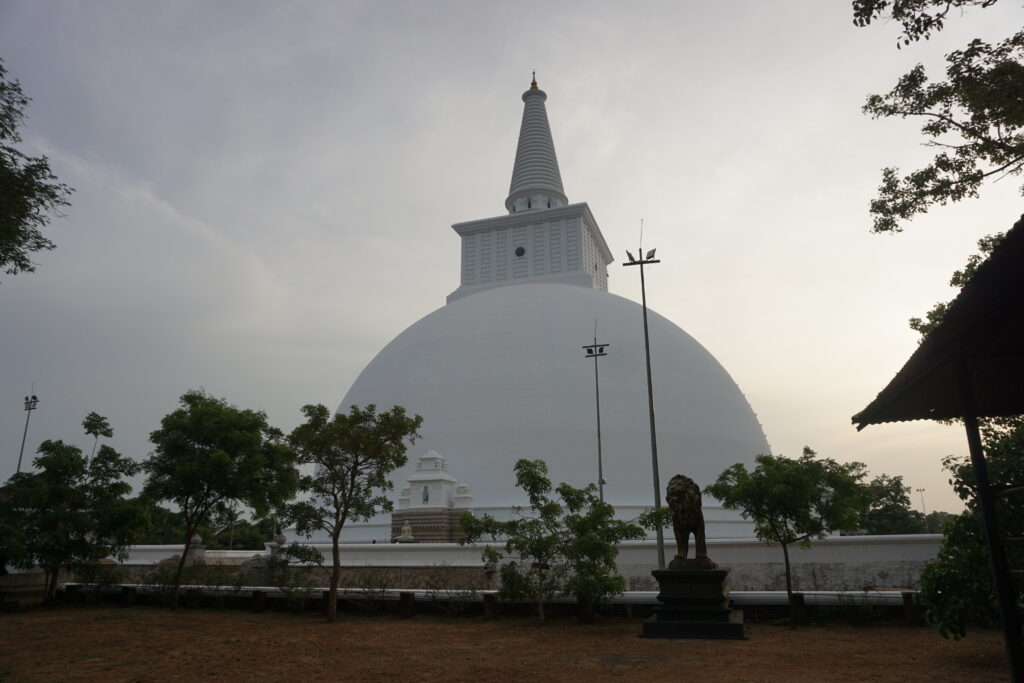
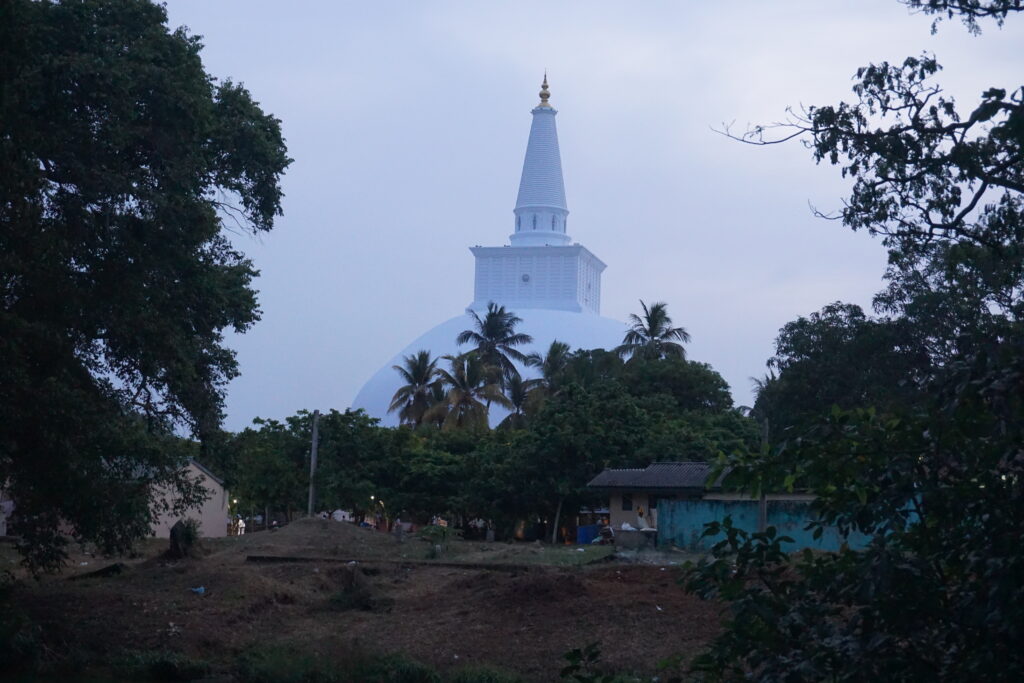
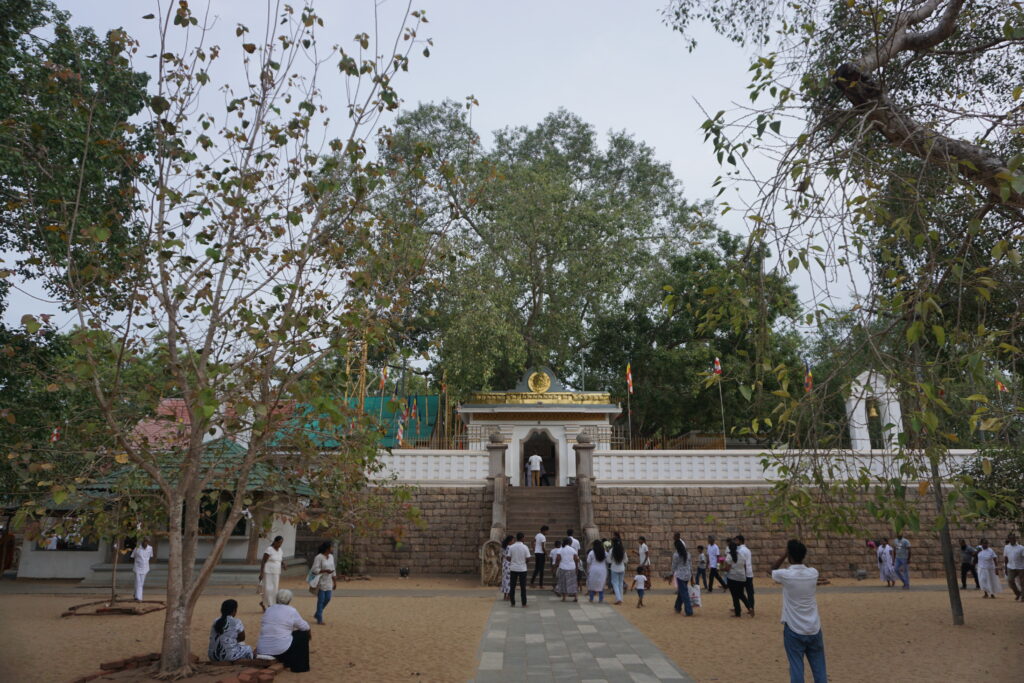
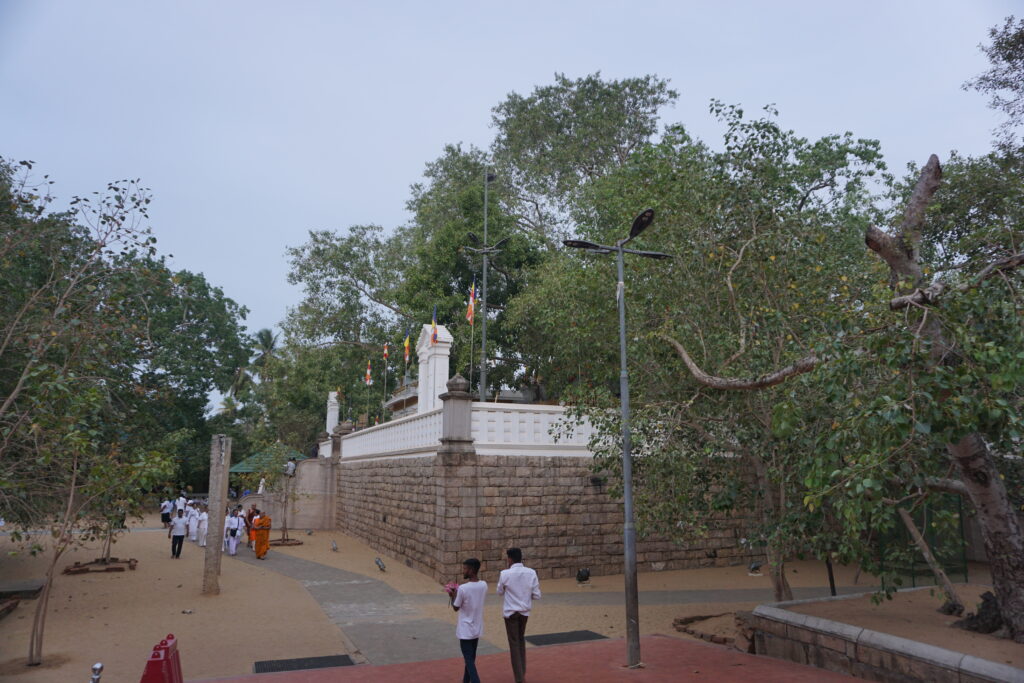
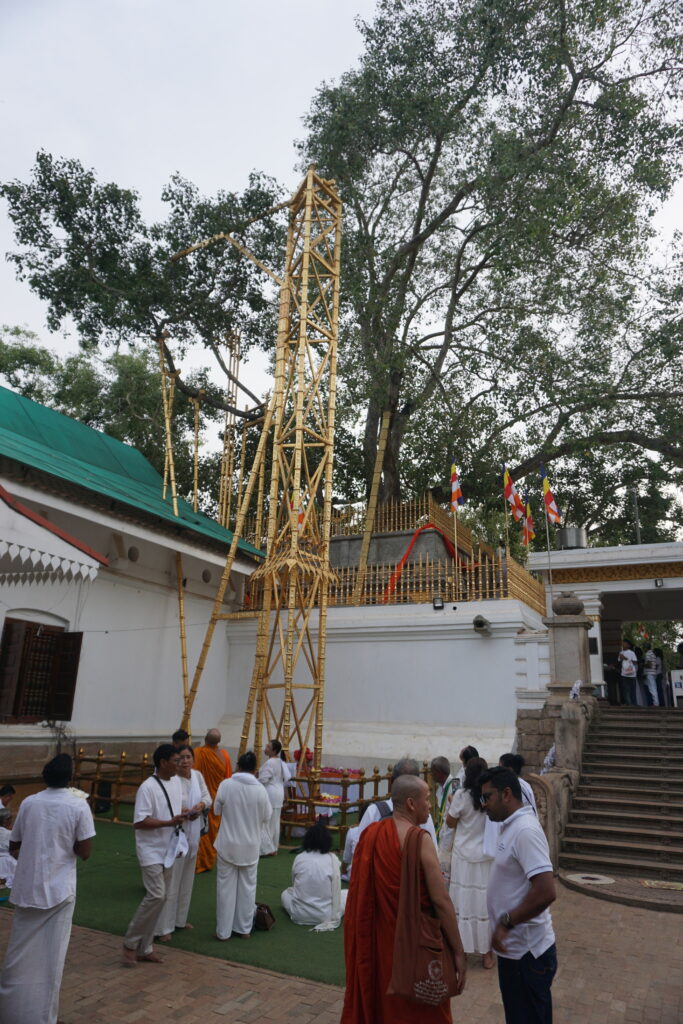
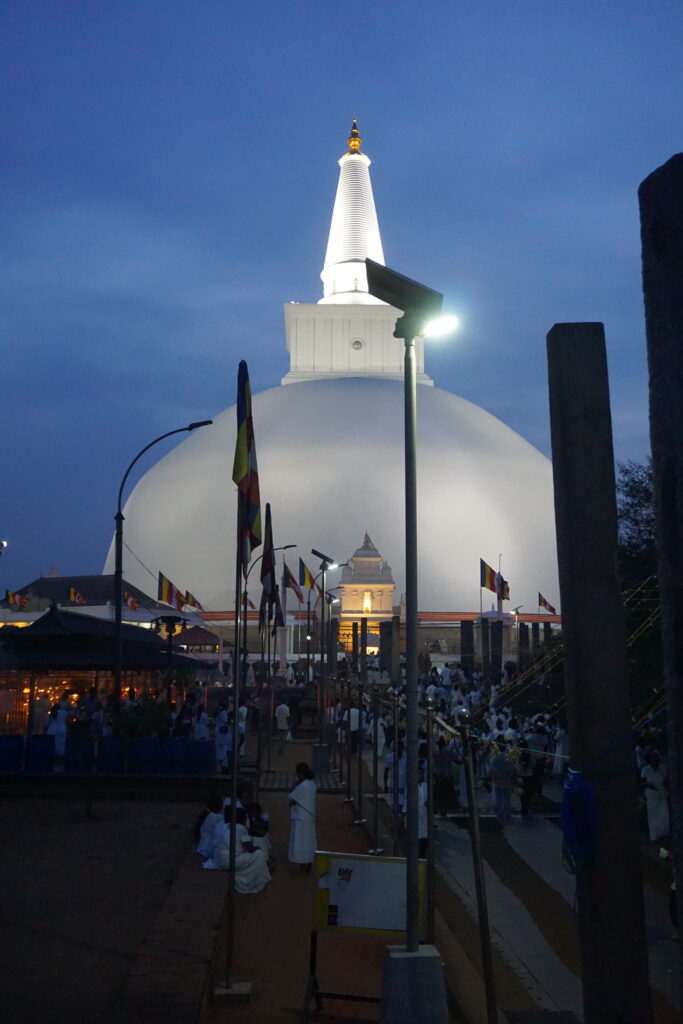
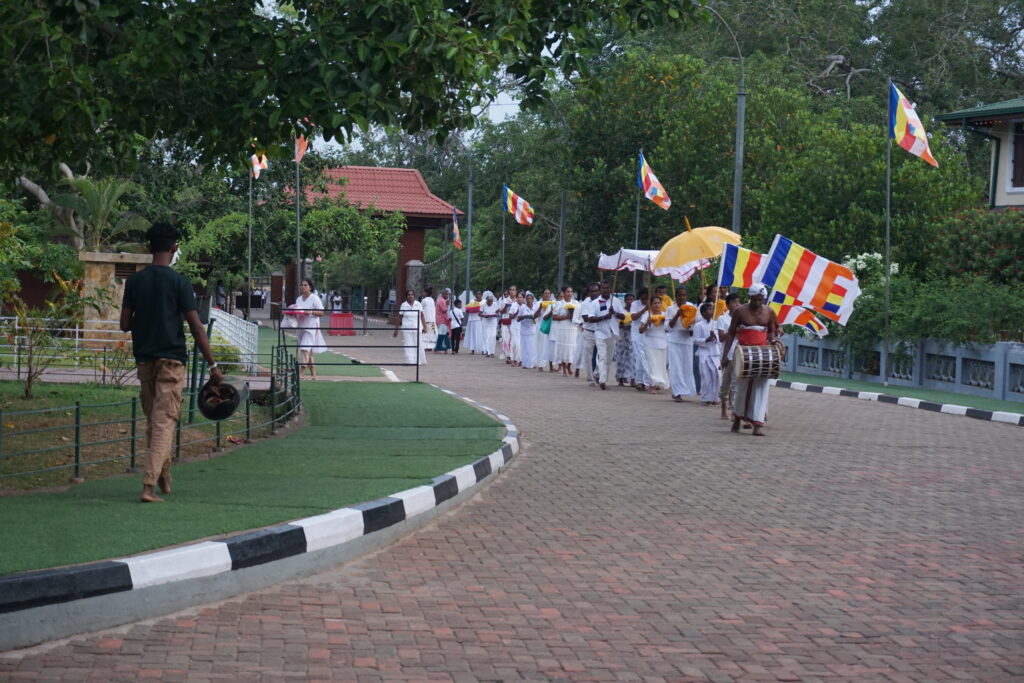
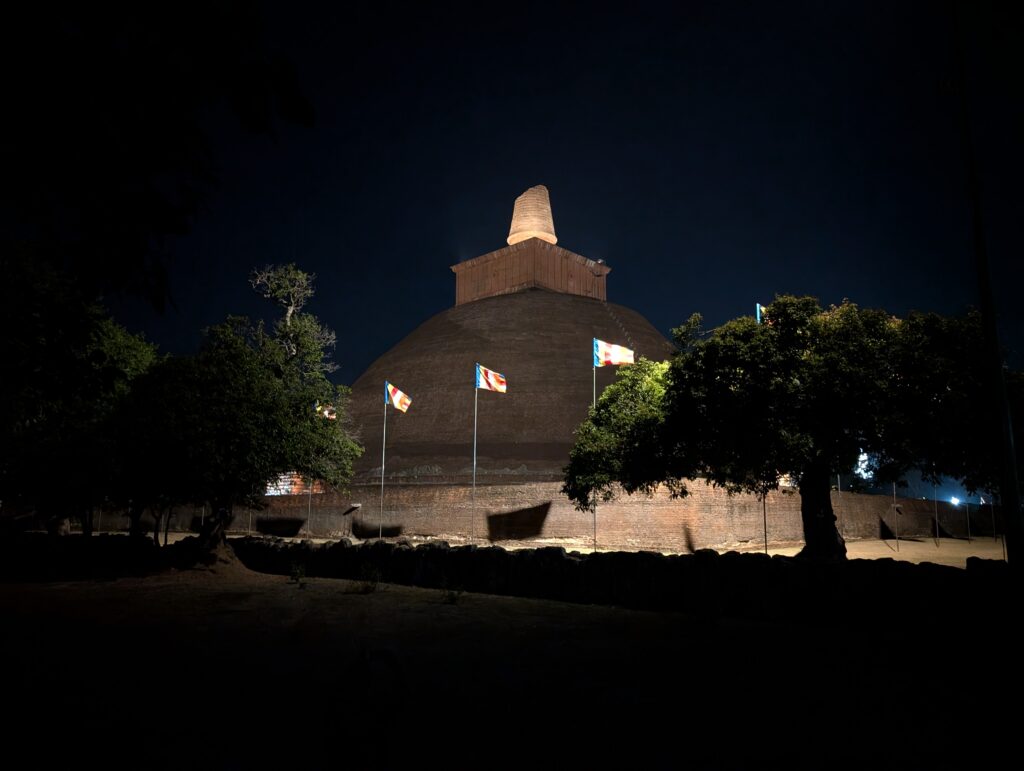
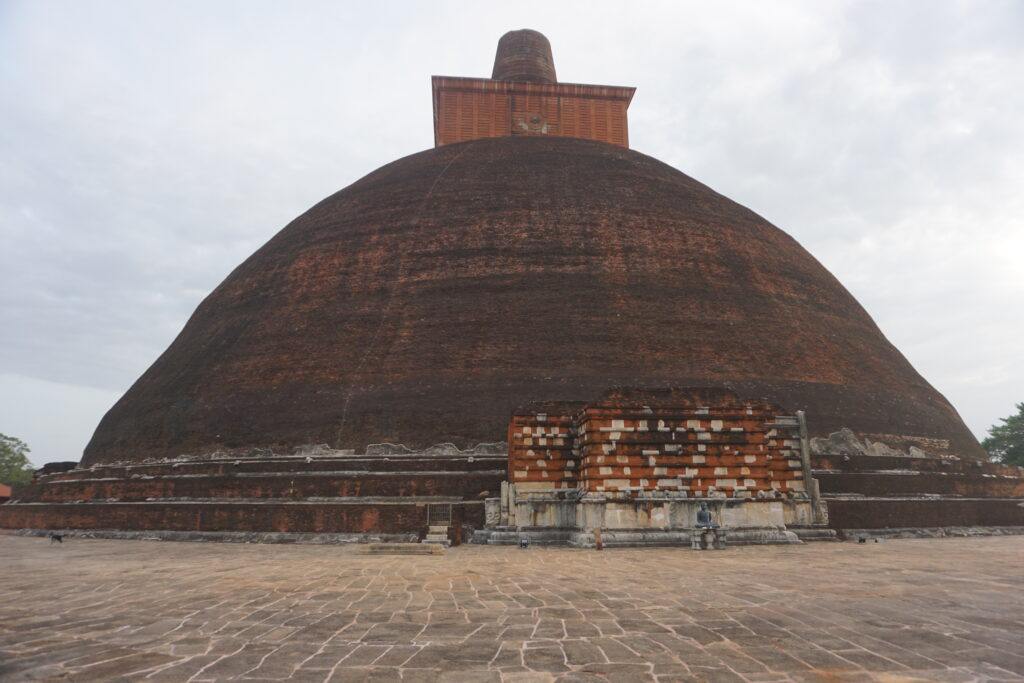
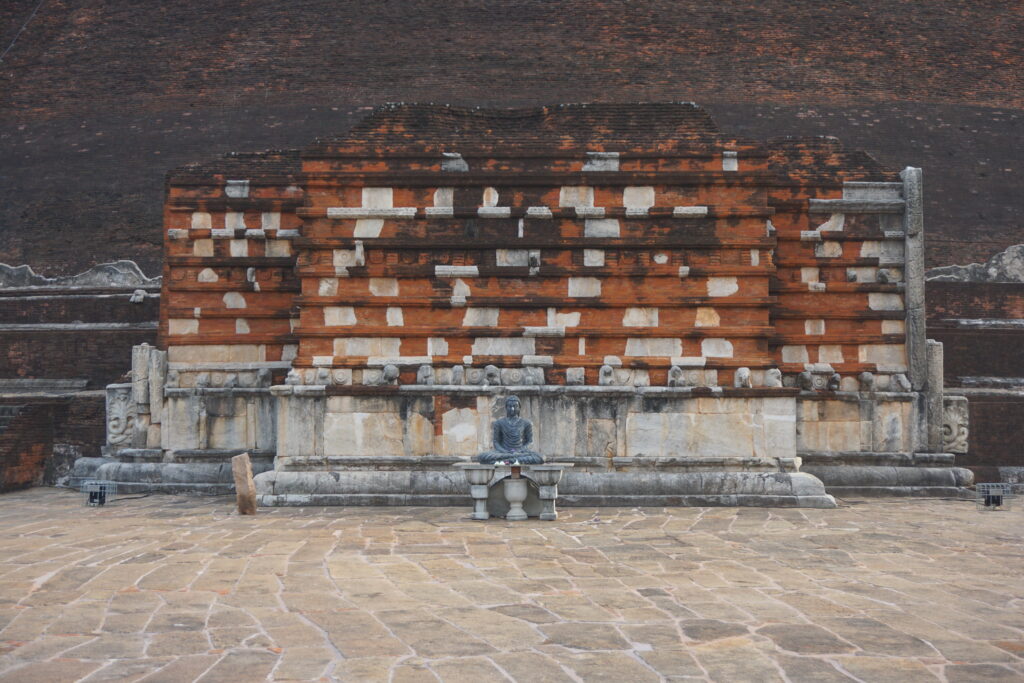
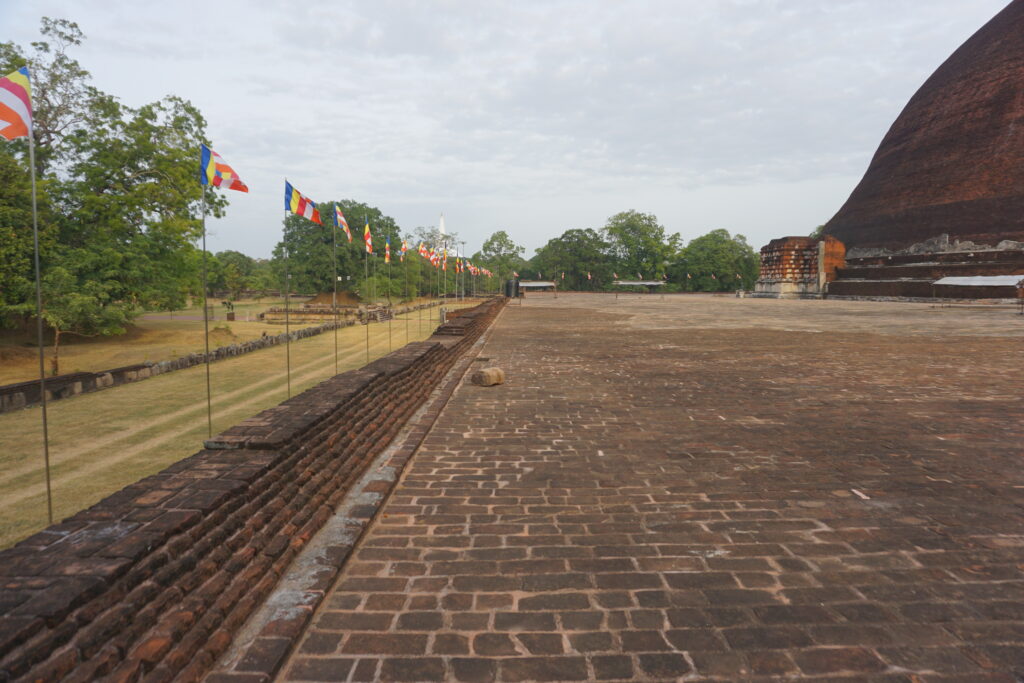
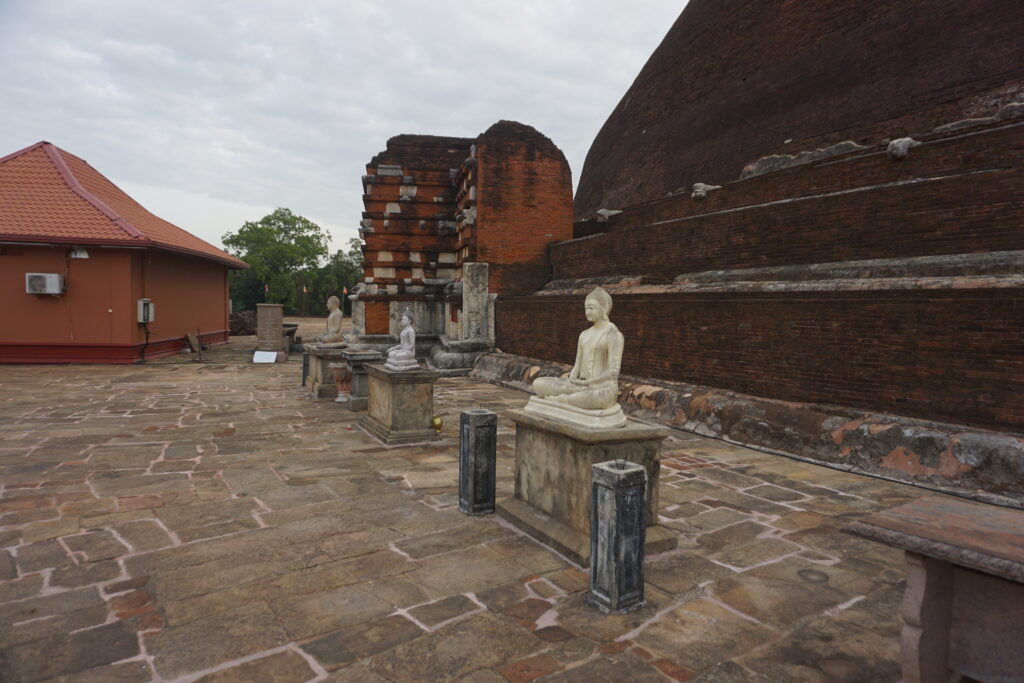
To this point, I had not seen or been contacted by anyone attempting to collect an admission. There were just two more sites I really wanted to see before heading to Sigiriya, a highlight I knew I didn’t want to miss. I pulled into a parking lot early enough in the morning that the vendors were not even there to harass tourists along the row of shops you had to pass to get to Abhayagiriya and the Samadhi Buddha statue. As I fiddled with the GPS, I was approached by someone I assumed was trying to get me to pay for something. The assumption was correct, it was a security guard directing me to a stand to pay the $35 fee.
By this point, I was planning to head to Sigiriya after seeing this last statue and temple. I would have liked to have seen the Samadhi Buddha. It is a seven foot, fourth century Buddha carving that was once located near the Bodhi Tree transplant. Abhayagiriya was yet another large Buddhist temple from the 2nd century BC. I had seen pictures of them. By this time, I had seen quite a few Buddha statues, and while I always enjoyed seeing ancient temples, this one was yet another very large, plain dome.
Susantha Premathilaka, the security guard approached me firmly, but politely. He spoke little English but was patient enough to use the Google translate app with me. I mentioned that I had not seen any ticket booth (since there was not one prominently set up). He tried to persuade me to buy the expensive ticket to see the local sites. I offered several pointless complaints. No one ever asks non-white foreigners to pay admission. The admission does not even cover all of the temples in Anuradhapura. Everyone in Sri Lanka is always asking for more money. None of this was Susantha’s fault. He was just doing his job, but I vented at him. I didn’t get angry or irate. I just expressed all of the pent up frustration I had collected during virtually every personal interaction I had had in Sri Lanka.
He promised I would be able to see all of the remaining sites in Anuradhapura by paying this fee. I knew this wasn’t true. I told him I had been squeezed for money enough, and that I thought I would just go on to my next stop. I could tell by looking into his eyes that he was genuinely saddened by this. He knew I had come a great distance – further than he was likely to travel in his lifetime – and he wanted me to understand and appreciate the beauty and culture of his country. He even offered to show me around Anuradhapura after he got off work if I would just go pay the fee. I knew I didn’t have time to do that. I think he really felt that the fee was too high and unjustly enforced against certain tourists. I knew that these were not his policies. I apologized to him for making him feel bad over enforcing policies he had no control over, but told him I thought I would go on. I exchanged contact information with him, though.
I went back to the car. I had a few messages from Stephanie. I chatted with her via WhatsApp for a bit, and attended to some other business. Now and then Susantha sent me a message encouraging me to stay and pay. I thought about it long and hard. Was I really going to forego seeing these ancient artifacts over a $35 fee? I had come halfway around the world to see things like this. When would I ever be back? Then again, there were just the two remaining. I had seen photos. They didn’t look all that impressive, and I was going to have to pay quite a few more similar fees during my time in Sri Lanka. After about an hour, I came to the conclusion that yes, there was a limit to how many large fees I would pay. I was not going to spend another $35 to see another nearly identical giant dome and another Buddha statue.
I bade Susantha farewell, and drove off toward Sigiriya to pay another fee over there. Of all the friendly people I have met on these around-the-world trips, I have more continued interaction with Susantha the Anuradhapura security guard I vented at than anyone else. He’s a good man, trying to make his way in a poor country. I am glad we met, regardless of the circumstances.
